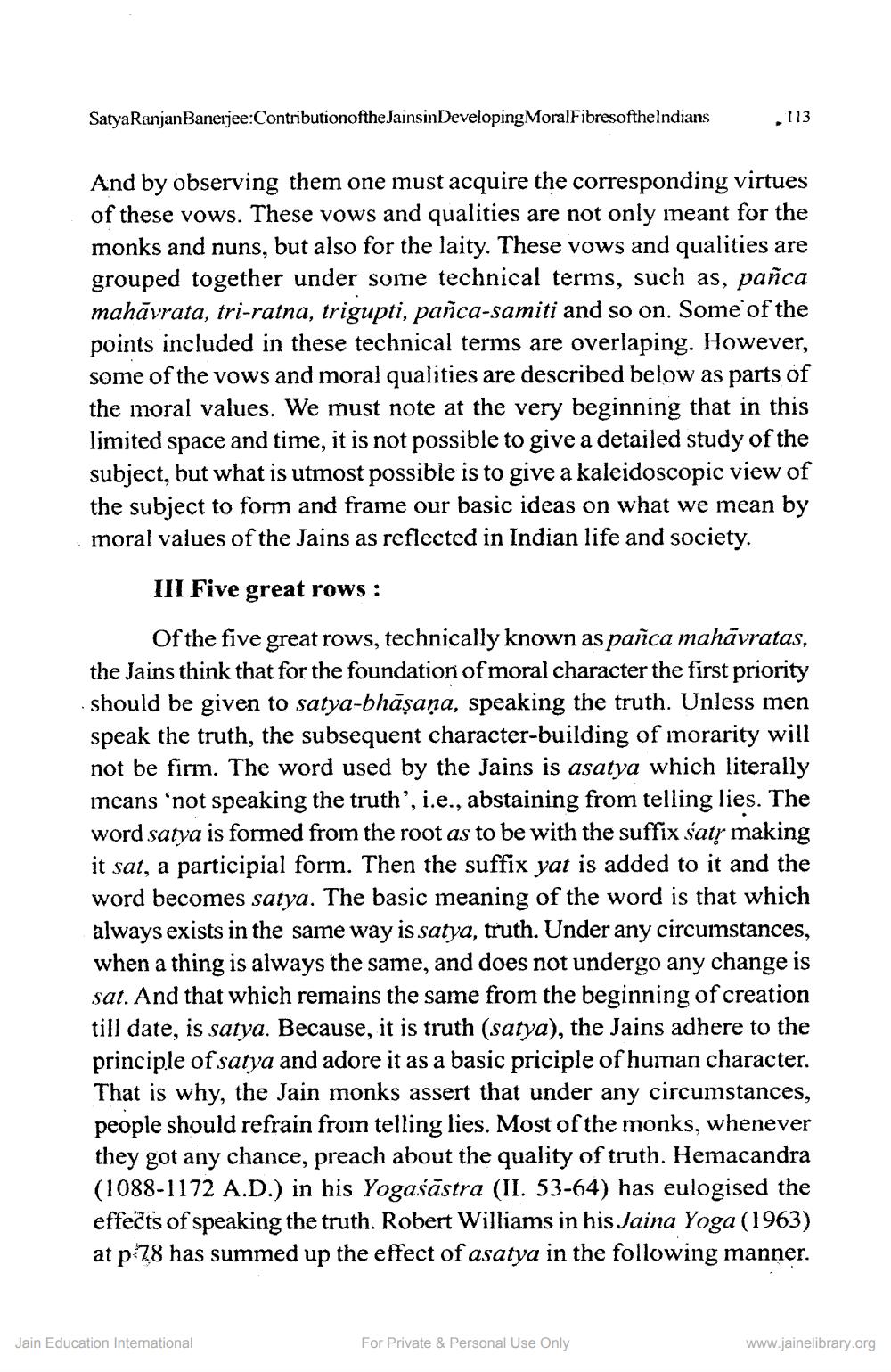Book Title: Jain Journal 2008 01 No 03 Author(s): Satyaranjan Banerjee Publisher: Jain Bhawan Publication View full book textPage 9
________________ SatyaRanjan Banerjee:Contributionofthe Jainsin DevelopingMoralFibresofthe Indians And by observing them one must acquire the corresponding virtues of these vows. These vows and qualities are not only meant for the monks and nuns, but also for the laity. These vows and qualities are grouped together under some technical terms, such as, pañca mahāvrata, tri-ratna, trigupti, pañca-samiti and so on. Some of the points included in these technical terms are overlaping. However, some of the vows and moral qualities are described below as parts of the moral values. We must note at the very beginning that in this limited space and time, it is not possible to give a detailed study of the subject, but what is utmost possible is to give a kaleidoscopic view of the subject to form and frame our basic ideas on what we mean by moral values of the Jains as reflected in Indian life and society. 113 III Five great rows: Of the five great rows, technically known as pañca mahāvratas, the Jains think that for the foundation of moral character the first priority should be given to satya-bhāṣaṇa, speaking the truth. Unless men speak the truth, the subsequent character-building of morarity will not be firm. The word used by the Jains is asatya which literally means 'not speaking the truth', i.e., abstaining from telling lies. The word satya is formed from the root as to be with the suffix saty making it sat, a participial form. Then the suffix yat is added to it and the word becomes satya. The basic meaning of the word is that which always exists in the same way is satya, truth. Under any circumstances, when a thing is always the same, and does not undergo any change is sat. And that which remains the same from the beginning of creation till date, is satya. Because, it is truth (satya), the Jains adhere to the principle of satya and adore it as a basic priciple of human character. That is why, the Jain monks assert that under any circumstances, people should refrain from telling lies. Most of the monks, whenever they got any chance, preach about the quality of truth. Hemacandra (1088-1172 A.D.) in his Yogasāstra (II. 53-64) has eulogised the effects of speaking the truth. Robert Williams in his Jaina Yoga (1963) at p 78 has summed up the effect of asatya in the following manner. Jain Education International For Private & Personal Use Only www.jainelibrary.orgPage Navigation
1 ... 7 8 9 10 11 12 13 14 15 16 17 18 19 20 21 22 23 24 25 26 27 28 29 30 31 32 33 34 35 36 37 38 39 40 41 42 43 44 45 46 47 48 49 50 51 52 53 54 55 56
